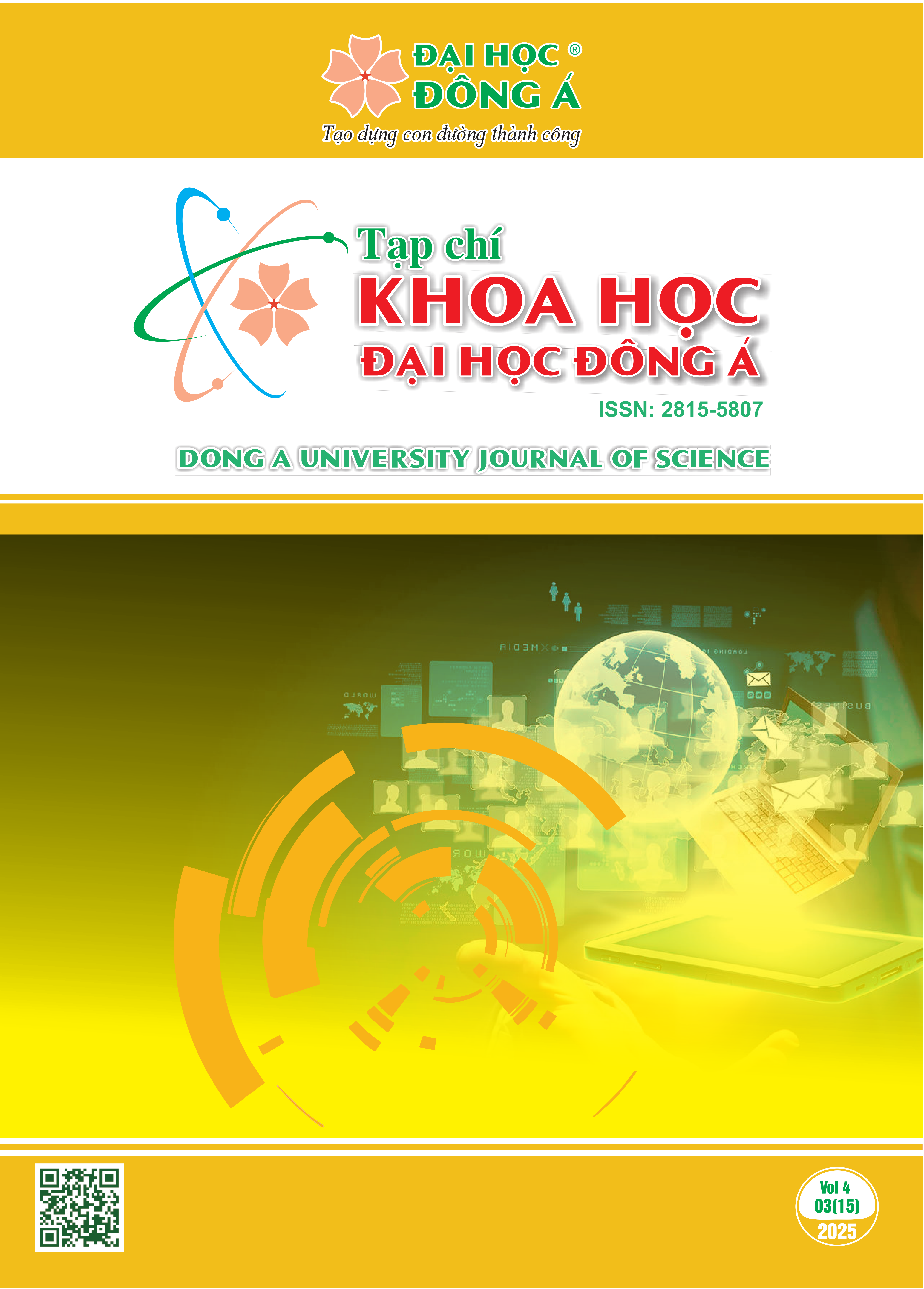Computational Investigate Into The Anti-breast Cancer Potential of Panax Ginseng Via Ubiquitin-Specific Protease 46 Inhibition.
Nội dung chính của bài viết
Tóm tắt
Breast cancer is a disease with a high mortality rate in women worldwide. The rate is increasing, escalating the medical burden in developed countries as well as developing countries. Several risk factors contribute to the development of this disease, including early puberty, late menopause, postmenopausal obesity, and the use of oral contraceptives or hormone replacement therapy, all of which slightly increase the risk of breast cancer. The search for new treatments to reach the majority of patients is very necessary. Notably, by searching for the pathogenesis, many studies have shown that Ubiquitin-Specific Protease 46 is involved in the development and metastasis of breast cancer cells. This insight has prompted efforts to identify potential inhibitors with biological activity capable of targeting this enzyme. Our study has identified Aposiopolamine, a compound derived from Panax ginseng, which demonstrates strong inhibitory potential against Ubiquitin-Specific Protease 46 and exhibits favorable pharmacokinetic properties.
Chi tiết bài viết

This work is licensed under a Creative Commons Attribution-NonCommercial-NoDerivatives 4.0 International License.
Từ khóa
Breast cancer, Ubiquitin-Specific Protease 46, Panax ginseng C.A. Meyer, Ubiquitin-Specific Protease 46 inhibitor, Aposiopolamine
Tài liệu tham khảo
Chang, Y. S., Seo, E.-K., Gyllenhaal, C., & Block, K. I. (2003). Panax ginseng: a role in cancer therapy? Integrative cancer therapies, 2(1), 13-33. https://doi.org/10.1177/1534735403251167
Cui, Y., Shu, X.-O., Gao, Y.-T., Cai, H., Tao, M.-H., & Zheng, W. (2006). Association of ginseng use with survival and quality of life among breast cancer patients. American Journal of Epidemiology, 163(7), 645-653. https://doi.org/10.1093/aje/kwj087
Cui, Y., Shu, X.-O., Gao, Y., Wen, W., Ruan, Z.-X., Jin, F., & Zheng, W. (2004). Use of complementary and alternative medicine by Chinese women with breast cancer. Breast cancer research and treatment, 85, 263-270. https://doi.org/10.1023/B:BREA.0000025422.26148.8d
Daina, A., Michielin, O., & Zoete, V. (2017). SwissADME: a free web tool to evaluate pharmacokinetics, drug-likeness and medicinal chemistry friendliness of small molecules. Scientific reports, 7(1), 42717. https://doi.org/10.1038/srep42717
Gui, D., Peng, W., Jiang, W., Huang, G., Liu, G., Ye, Z., Wang, Y., Xu, Z., Fu, J., & Luo, S. (2019). Ubiquitin-specific peptidase 46 (USP46) suppresses renal cell carcinoma tumorigenesis through AKT pathway inactivation. Biochemical and Biophysical Research Communications, 519(4), 689-696. https://doi.org/10.1016/j.bbrc.2019.09.036
Imai, S., Kano, M., Nonoyama, K., & Ebihara, S. (2013). Behavioral characteristics of ubiquitin-specific peptidase 46-deficient mice. PloS one, 8(3), e58566. https://doi.org/10.1371/journal.pone.0058566
Ke, L., Jia, Z., Gao, W., & Luo, L. (2023). Ubiquitin specific protease 46 potentiates triple negative breast cancer development by stabilizing PGAM1‐mediated glycolysis. Cell Biology International, 47(1), 41-51. https://doi.org/10.1002/cbin.11937
Li, S., Zhang, H., & Wei, X. (2021). Roles and mechanisms of deubiquitinases (DUBs) in breast cancer progression and targeted drug discovery. Life, 11(9), 965. https://doi.org/10.3390/life11090965
Li, X., Stevens, P. D., Yang, H., Gulhati, P., Wang, W., Evers, B. M., & Gao, T. (2013). The deubiquitination enzyme USP46 functions as a tumor suppressor by controlling PHLPP-dependent attenuation of Akt signaling in colon cancer. Oncogene, 32(4), 471-478. https://doi.org/10.1038/onc.2012.66
Morris, G. M., Huey, R., Lindstrom, W., Sanner, M. F., Belew, R. K., Goodsell, D. S., & Olson, A. J. (2009). AutoDock4 and AutoDockTools4: Automated docking with selective receptor flexibility. Journal of computational chemistry, 30(16), 2785-2791. https://doi.org/10.1002/jcc.21256
Nguyen, T. K., Phung, H. H., Choi, W. J., & Ahn, H.-C. (2022). Network pharmacology and molecular docking study on the multi-target mechanisms of Aloe vera for non-alcoholic steatohepatitis treatment. Plants, 11(24), 3585. https://doi.org/10.3390/plants11243585
Nguyen, T. K., Thi Pham, K. H., Trung, T. T., Le, N. T., Ho, D. V., Nguyen, H. T., & Thi Tran, L. T. (2025). Alpha-glucosidase inhibitory activities of furanoflavonoids isolated from Pongamia pinnata: DFT calculation, molecular modelling and in vitro studies. Natural Product Communications, 20(2), 1934578X251321051. https://doi.org/10.1177/1934578X251321051
Ru, J., Li, P., Wang, J., Zhou, W., Li, B., Huang, C., Li, P., Guo, Z., Tao, W., & Yang, Y. (2014). TCMSP: a database of systems pharmacology for drug discovery from herbal medicines. Journal of cheminformatics, 6, 1-6. https://doi.org/10.1186/1758-2946-6-13
Stewart, B., & Wild, C. (2014). World Cancer Report 2014. Geneva, Switzerland: WHO Press.
Sun, Y.-S., Zhao, Z., Yang, Z.-N., Xu, F., Lu, H.-J., Zhu, Z.-Y., Shi, W., Jiang, J., Yao, P.-P., & Zhu, H.-P. (2017). Risk factors and preventions of breast cancer. International journal of biological sciences, 13(11), 1387. https://doi.org/10.7150/ijbs.21635
Thi Pham, K. H., Tran, M. H., Nam, L. B., Pham, P. T. V., & Nguyen, T. K. (2024). Structure, Inhibitors, and Biological Function in Nervous System and Cancer of Ubiquitin-Specific Protease 46. Bioinformatics and Biology Insights, 18, 11779322241285982. https://doi.org/10.1177/11779322241285982
Umemura, S., Imai, S., Mimura, A., Fujiwara, M., & Ebihara, S. (2015). Impaired maternal behavior in Usp46 mutant mice: a model for trans-generational transmission of maternal care. PloS one, 10(8), e0136016. https://doi.org/10.1371/journal.pone.0136016
Valdés-González, J. A., Sánchez, M., Moratilla-Rivera, I., Iglesias, I., & Gómez-Serranillos, M. P. (2023). Immunomodulatory, anti-inflammatory, and anti-cancer properties of ginseng: a pharmacological update. Molecules, 28(9), 3863. https://doi.org/10.3390/molecules28093863
Wen, M., Xu, H., Peng, H., Sheng, Y., Yang, W., & Yan, J. (2022). MiR‐27a‐3p targets USP46 to inhibit the cell proliferation of hepatocellular carcinoma. Chemical Biology & Drug Design, 100(2), 280-289. https://doi.org/10.1111/cbdd.14063
WHO. WHO: Geneva, Switzerland. Breast cancer. Retrieved March 15 from http://www.who.int/cancer/prevention/diagnosis-screening/breast-cancer/en/
Xia, C., Dong, X., Li, H., Cao, M., Sun, D., He, S., Yang, F., Yan, X., Zhang, S., & Li, N. (2022). Cancer statistics in China and United States, 2022: profiles, trends, and determinants. Chinese medical journal, 135(05), 584-590.
Yun, T.-K., & Choi, S.-Y. (1998). Non-organ specific cancer prevention of ginseng: a prospective study in Korea. International journal of epidemiology, 27(3), 359-364. https://doi.org/10.1093/ije/27.3.359
Zheng, Q., Zhu, J.-Z., Bao, X.-Y., Zhu, P.-C., Tong, Q., Huang, Y.-Y., Zhang, Q.-H., Zhang, K.-J., Zheng, G.-Q., & Wang, Y. (2018). A preclinical systematic review and meta-analysis of astragaloside IV for myocardial ischemia/reperfusion injury. Frontiers in Physiology, 9, 795. https://doi.org/10.3389/fphys.2018.00795


